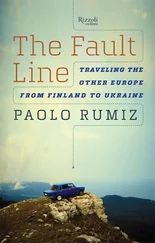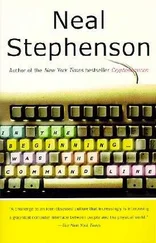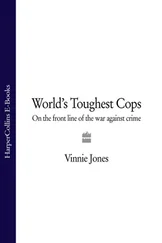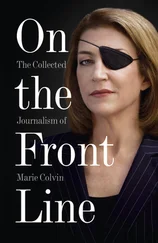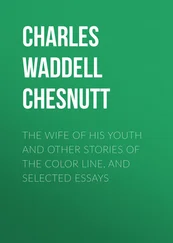While holding out his hand, he was repeating the words, ‘ Talitha koum. Talitha koum. Talitha koum. ’
The Biblical passage of Mark 5:41 reads as follows:
He came to the synagogue ruler’s house, and he saw an uproar, weeping, and great wailing. When he had entered in, he said to them, ‘Why do you make an uproar and weep? The child is not dead, but is asleep.’ They ridiculed him. But he, having put them all out, took the father of the child, her mother, and those who were with him, and went in where the child was lying. Taking the child by the hand, he said to her, ‘Talitha koum!’ which means, ‘Girl, I tell you, get up!’ Immediately, the girl rose and walked, for she was twelve years old. [17]
New York City, USA, 1989
Four years of high school, four years of college and four years of theology later, Vincent Matthew Sinclair would be called to ordination by the archbishop at St Patrick’s Cathedral.
Construction of St Patrick’s Cathedral, located on 50th Street and 5th Avenue in the heart of Manhattan, had been completed in 1879. However, it was only in 1989 that the cathedral received a new amplification system as well as modernised lighting. Due to this technology upgrade, Father Vincent Sinclair’s ordination to the Roman Catholic priesthood was seen and heard clearly by all who were present.
Present among the crowd were two very proud parents, Julia and Matthew Sinclair, as well as a bored but dutifully present aunt, Martha Sinclair.
His Eminence John Cardinal O’Connor, the Archbishop, had imposed his hands on Vincent’s head and had repeated the words from Psalm 110:4: ‘Thou art a priest forever after the order of Melchizedek!’
This marked the beginning of Vincent’s new life as a diocesan priest in the Church of Our Lady of Sorrows in White Plains, New York. His duties included celebrating Mass on Sundays and other days, hearing confessions, anointing the sick, baptising newborns, marrying the marriageable and burying the dead.
Besides his church duties, Vincent also began teaching history to a class of Catholic boys at the nearby Archbishop Stepinac High School.
White Plains, New York, USA, 1990
The school’s oldest fixture was a grizzly old janitor, Ted Callaghan. On Vincent’s first day at school, Ted had cornered him in the schoolyard. ‘Father, can I ask you a few questions regarding some serious matters that have been bothering me?’ asked Ted slyly.
Without waiting for an answer, Ted plodded on, ‘You see, the Bible’s Leviticus 15:19-24 tells me that I am allowed no contact with a woman while she is in her period of menstrual uncleanliness. Problem is, how do I tell? I have tried asking, but most women take offence!’
Vincent chuckled.
Ted, blowing an ugly puff of acrid smoke from a cheap cigar, continued with his ‘serious’ issues. ‘Also, Father, Exodus 21:7 allows me to sell my daughter into slavery. What do you think would be a fair price?’
Vincent was getting the idea.
Pretty much oblivious to Vincent’s reactions, Ted went on, ‘Leviticus 25:44 also says that I may possess slaves, both male and female, provided that they’re from neighbouring countries. Do you think this applies to both Mexicans and Canadians?’
By now Vincent was laughing uncontrollably. Ted paused for effect and then continued, ‘I have a neighbour who insists on working on the Sabbath. Exodus 35:2 clearly states that he should be put to death. Am I morally obliged to kill him?’ [18]
Ted had reached the climax of his joke and guffawed loudly as he delivered his punch line while dramatically brandishing the now dead cigar stub in his hand. Vincent couldn’t help doubling up with laughter. From that day onwards, Ted and Vincent were firm friends.
White Plains, New York, USA, 2006
They would remain friends for the next sixteen years that Vincent remained ensconced in his uneventful little world. However, things were about to change.
‘So when we think of Abraham Lincoln as the sixteenth President of the United States, we often forget that he worked on a riverboat, ran a store, thought about becoming a blacksmith and studied law. We tend to forget that he was unsuccessful in many of his pursuits. He lost several law cases, failed in his effort to become the Republican Party’s vice-presidential nominee, and lost again when he ran against Stephen Douglas for the US Senate. The important thing to remember is that he didn’t let these defeats stop him. He ran for President in 1860 and won,’ concluded Vincent. [19]
The boys were impatiently waiting to get up. The bell announcing lunch break had sounded a full thirty seconds earlier, but Vincent’s concluding remarks had overrun. He hastily picked up his books and headed to the staff lounge, where stale coffee awaited him.
The lousy coffee was a small price to pay for a job that he now loved. There was nothing more refreshing than opening up young minds. Moreover, he was passionate about his subject. This passion allowed him to transport his young audience into times bygone with flair. It was no wonder that Vincent had become one of the most admired teachers at Stepinac High.
Vincent had been able to settle down in Westchester quite easily. His parishioners at the church were decent people and his flock continued to grow along with his own stature within the diocese. His casual and comfortable style had immediately put people at ease within the first months of his arrival.
After one of his Sunday sermons, one of the middle-aged male attendees
had come up to him and had congratulated him for a ‘short and sweet sermon, so unlike the long and boring ones’ delivered by his predecessor. Vincent had quickly retorted that a sermon was meant to be like a woman’s skirt, long enough to cover the essentials and short enough to keep one interested! The word had soon got around that the new boy was actually quite a lot of fun, in spite of being celibate!
The coffee that greeted him was stale but hot. He had just settled down in one of the armchairs in the lounge and opened his newspaper, when janitor-of-the-year Ted Callaghan walked in.
‘Phone for you, Vincent,’ he said.
Vincent looked up and asked, ‘Who’s calling?’
‘Dunno. Probably some chick that you blessed with holy water,’ chuckled Ted.
Vincent ignored the sarcasm and got up to take the call at the phone located near the lounge entrance. He picked up the receiver and spoke, ‘Hello?’
‘Is that Mr Vincent Sinclair?’ asked the female voice at the other end.
‘Yes, it is. Who’s calling?’
‘I’m Dr Joan Silver from Lenox Hill Hospital. I’m afraid I have some bad news for you.’
Vincent was immediately alert. He knew that something was seriously wrong. He pressed on, ‘Please do go on.’
‘Mr Sinclair, this morning at around 8 am, a car accident took place. Your father died on the spot, I’m afraid. Your mother suffered head wounds but by the time she arrived here, it was too late. She was dead, too.’
Father Vincent Matthew Sinclair let go of the receiver and knelt down to pray, but he was unable to; all he could do was weep.
Queens, New York, USA, 2006
In 1852, a city law forbade burials within Manhattan. Manhattanites could be born in Manhattan, could study or work in Manhattan, could get married in Manhattan, could die in Manhattan, but could not be buried in Manhattan. [20]
The rain made the burial a rather messy affair. Both Matthew and Julia Sinclair were to be buried in St John Cemetery in Queens County, where they would join Vincent’s paternal grandparents, who had also been buried there.
The presence of Vincent’s aunt, Martha, was of great comfort to him. Martha was the significantly younger sister of Vincent’s father, Matthew, and had been more of a friend than an aunt to Vincent.
Читать дальше

